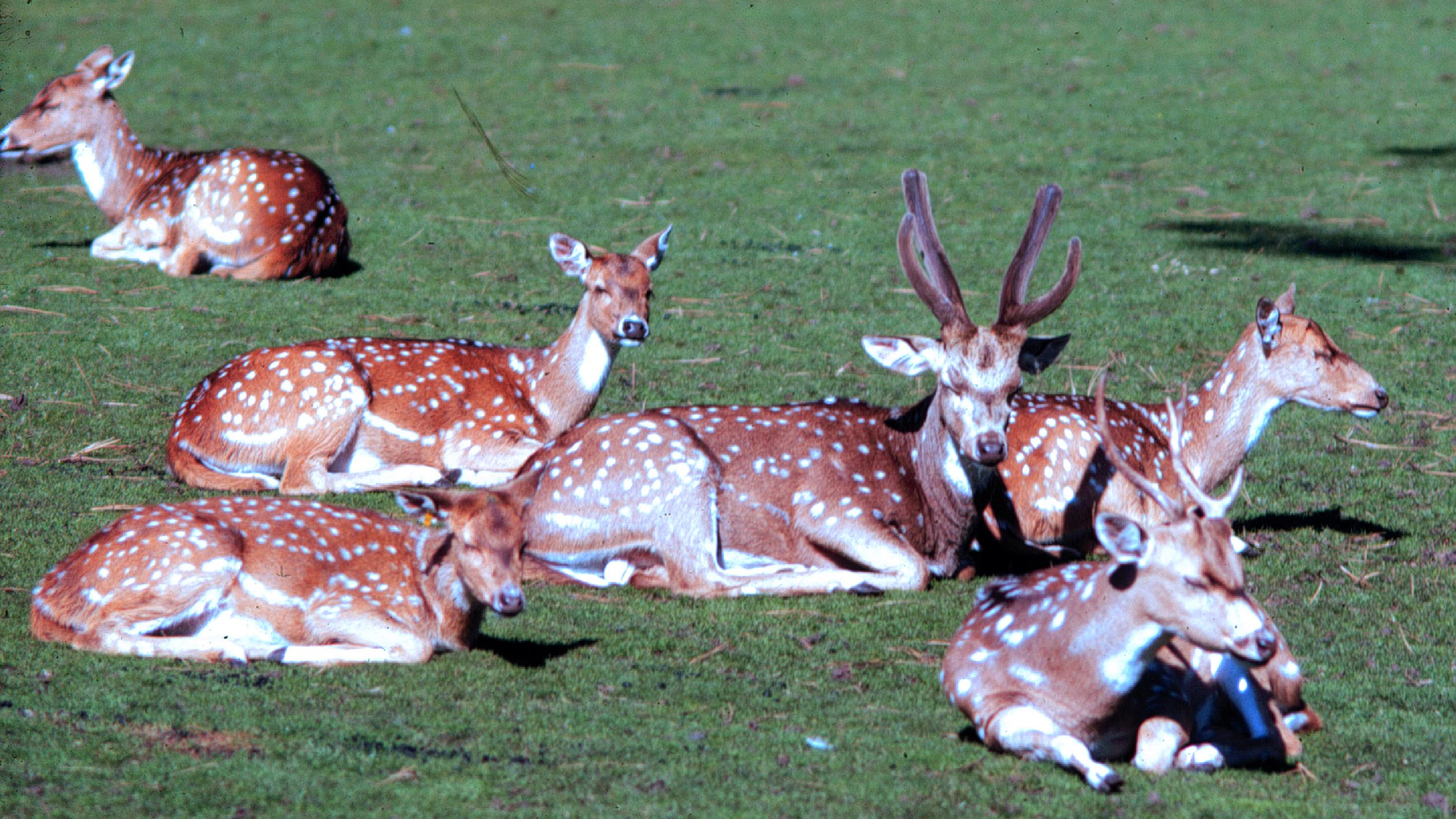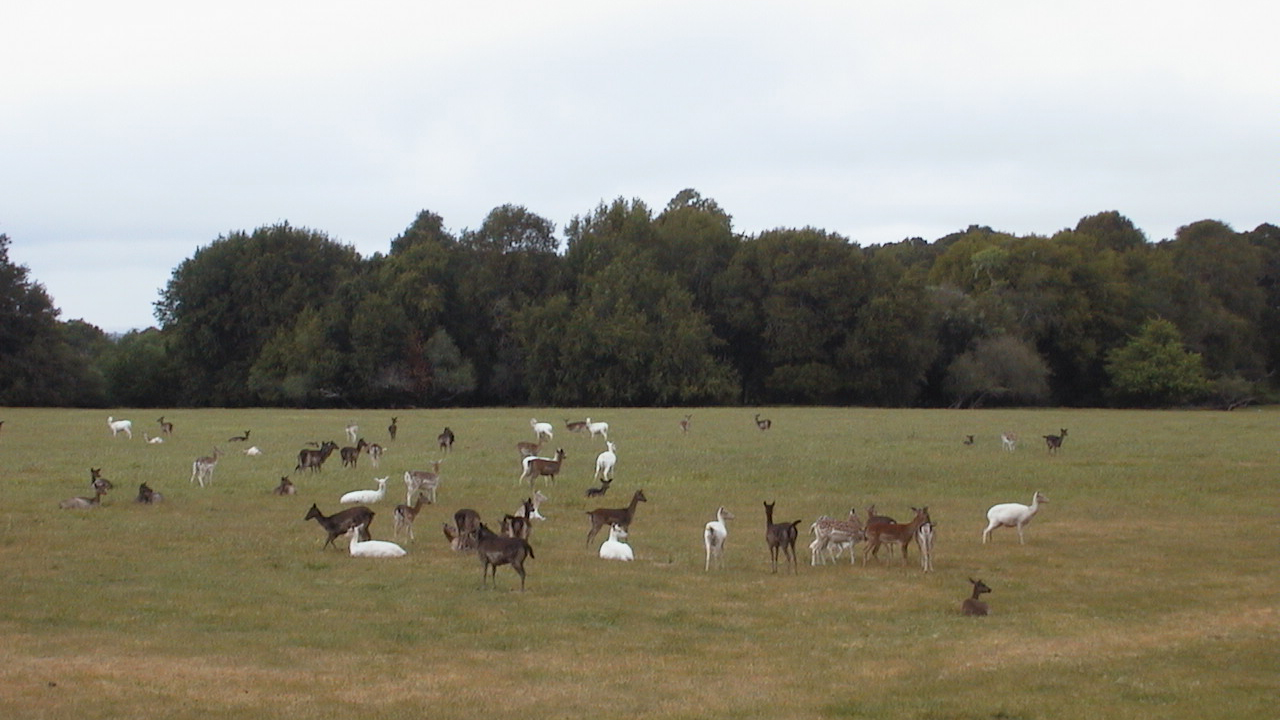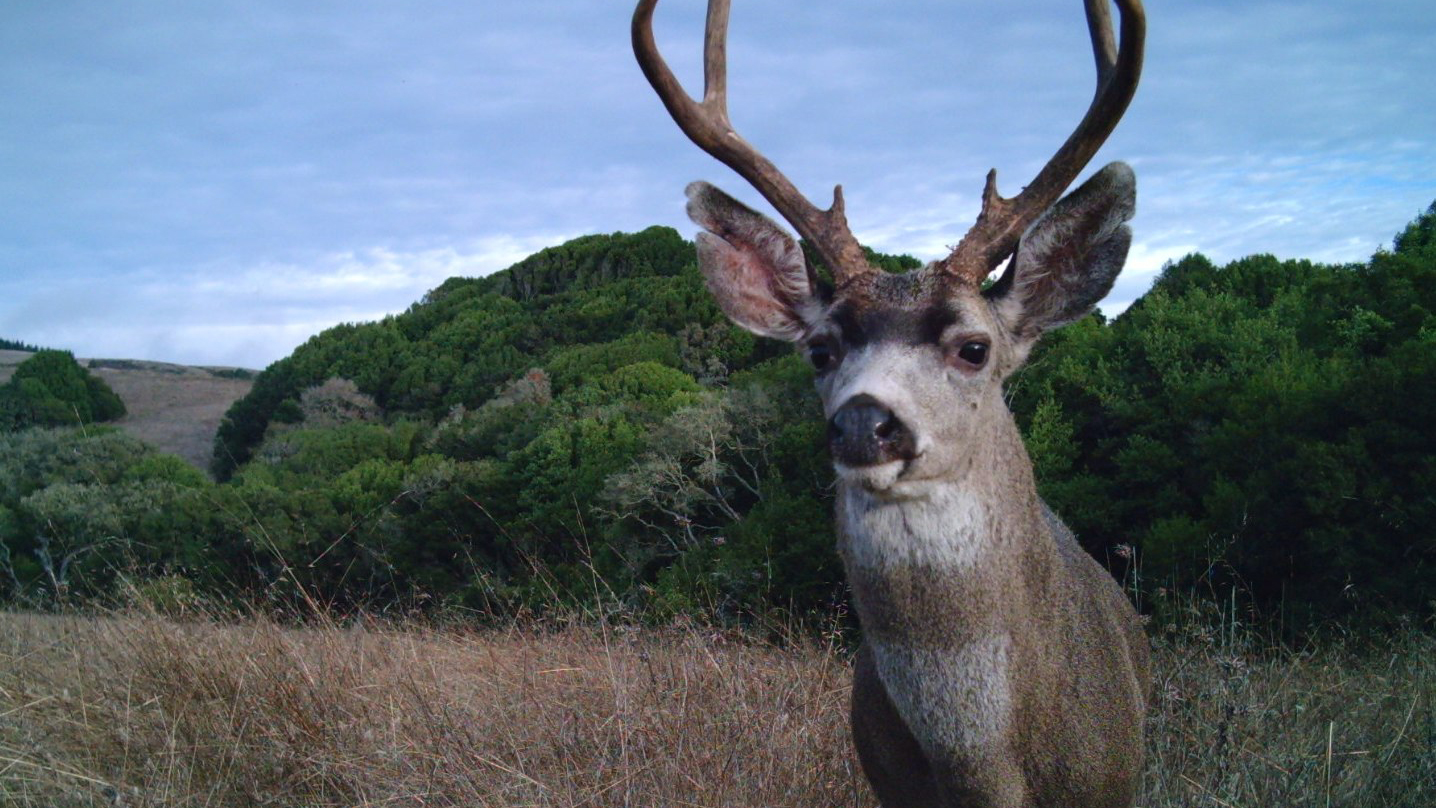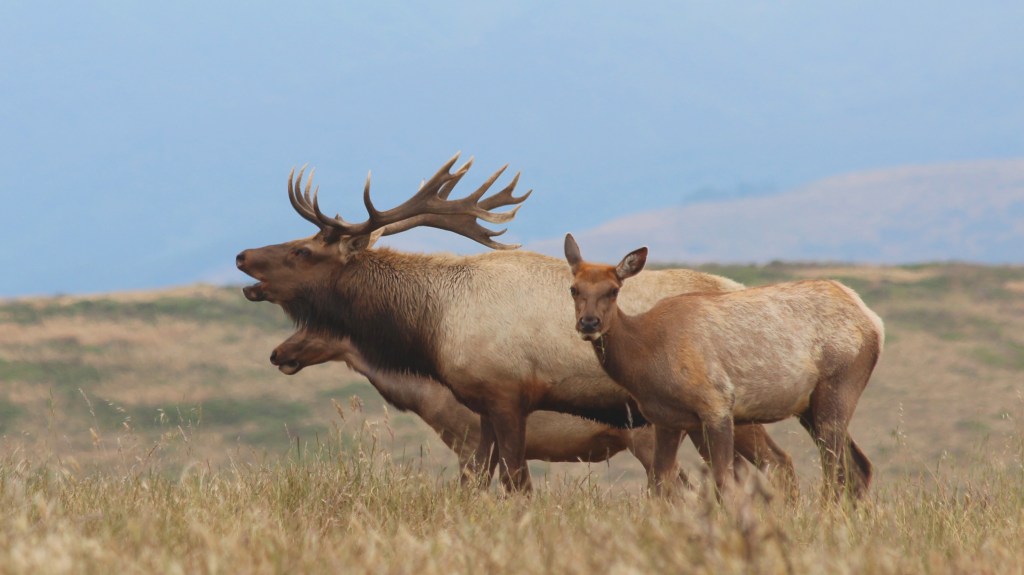The National Park Service gets pummeled by the public, politicians and media for all the right and all the wrong reasons. Right reasons include violations of its century-old Organic Act, which requires the agency to “conserve” native wildlife, leaving it “unimpaired for the enjoyment of future generations.” Wrong reasons include adherence to this law.
The story of how, in the face of intense opposition, the service ensured recovery of the 100-square-mile Point Reyes National Seashore in northern California is an example of wildlife management gone right — a profile in courage.
The story has gone unreported, largely because the service and its allies have been fearful of reigniting the controversy. But if the story is told in a way that educates rather than mocks the opposition, that’s not likely to happen. And if it’s not told, there’s no hope of reducing such opposition in the future.
Enormous Herds of Invasive Deer
Damage started in 1948 when the San Francisco Zoo sold to a doctor axis and fallow deer (native to India and Asia Minor respectively) which he released on his 5,000-acre hunting club, later to become part of the national seashore.
The aliens multiplied and spread, imperiling or potentially imperiling natives, including 65 mammal species (among them tule elk, eliminated by unregulated hunting circa 1860 but reintroduced in 1998), 470 bird species including three listed under the Endangered Species Act (western snowy plover, northern spotted owl and brown pelican), 28 species of reptiles and amphibians (including the endangered red-legged frog) and ESA-listed races of steelhead trout and coho and Chinook salmon.
Unlike North American ungulates, axis and fallow deer gather in enormous herds, taking over riparian areas, silting aquatic habitat and destroying shade cover. Fallow deer, more aggressive than the park’s black-tailed deer or tule elk, use “leks” — mating areas where bucks congregate, vocalizing to attract does. They stamp, roll, wallow, strip bark from trees, rip up vegetation and scrape deep holes in soil. And axis and fallow deer spread paratuberculosis, an incurable wasting disease to which tule elk and blacktails are susceptible.

From 1976 to 1994 rangers culled about 3,000 fallow and axis deer. Then, while the aliens multiplied, the park embarked on long environmental review of threats to the park and strategies to abate them, finally publishing a draft EIS in 2004.
The controversy started in 2006 when the park announced that it would proceed with its “preferred alternative” — eradication of alien deer by 2021 via “long-lasting contraceptives and lethal removal.”
Defending the aliens were the Humane Society of the United States, National Humane Education Society, the Marin Humane Society, In Defense of Animals and WildCare. Support for removal came from individuals and agencies who understood and valued native ecosystems, most notably the National Marine Fisheries Service, U.S. Fish and Wildlife Service, Environmental Protection Agency, California Department of Fish and Wildlife, California Coastal Commission, California Department of Parks and Recreation, Marin Conservation League, National Parks Conservation Association and the Sierra Club.

The aliens were adored by the public, especially the white variants of fallow deer. “I have to tell you that any creature that comes in white is especially loved by humans,” declares biologist Dr. Natalie Gates, who worked at Point Reyes from 1999 till 2014 when she became superintendent of Haleakalā National Park on Maui. “White raises them to mythical status. There were more fallow than axis deer, and the fallows stayed where people were. The public was used to seeing them; and change is hard. We weren’t just dealing with an animal-rights issue; we were dealing with a cultural issue.”
“The Point Reyes job was the hardest.”
Winning the contract for eradication was White Buffalo, Inc., a nonprofit company dedicated to recovering imperiled species by reducing overpopulations of native animals and eliminating aliens. Horrified at the havoc these human-caused disruptions were wreaking on the natural world, Dr. Anthony DeNicola started the company in 1996. The name affirms Gates’ point; it derives from the belief of Native Americans that the birth of a white buffalo signified their ties with nature.

White Buffalo’s work is as difficult as it is essential. DeNicola is generally reviled by the animal-rights community. He has been cursed in person and in print, accused of “thrill killing,” threatened, and sued seven times (never successfully). But in 20 years of recovering native ecosystems around the world he says the Point Reyes job has been his hardest.
In his project report DeNicola gives special thanks to Dr. Scott Morrison, The Nature Conservancy in California’s director of conservation science “who supported our proposal, facilitated our early relationship with the park, and funded our contraceptive research efforts.”
Morrison worked with White Buffalo in the hugely successful eradication of feral pigs from Santa Cruz Island off southern California (for which TNC and the National Park Service were vilified in the media and unsuccessfully sued). He told me this: “What White Buffalo accomplished at Point Reyes is an unbelievable story and such an important contribution. That kind of work requires a highly specialized skill set; and Tony exemplifies what’s needed. When you’re trying to get to zero you have to be extremely careful not to educate remaining animals. If you’re not 100-percent confident that you can get an entire group, the discipline is not to take a shot. The marksmanship of Tony and his team enables another important objective which is to avoid wounding and escape. That’s something a lot of people don’t appreciate.”
White Buffalo’s wounding rate at Point Reyes was zero. All animals were killed instantly, as per the American Veterinary Medical Association euthanasia standards for wildlife and with lead-free bullets. Meat was donated to the needy whenever possible.
Protests were sustained and vigorous. A “wailing wall” was set up at park headquarters. Opponents festooned the park with “wanted posters” featuring a circled photo of DeNicola slashed by a line; and they marched around with placards bearing such messages as “I’m white and non-native, too.” They worked the media until 80 percent of the people polled in Marin County voiced opposition. A book of verse — “Poems for the Lost Deer” — was published and nationally distributed, even by Amazon. At one hearing a man claiming to be Jesus Christ read a long poem in which he cast Park Service personnel as vampires. The agency’s Jobian patience expired after 20 minutes, and he was escorted from the building.
In 2008, with eradication underway, House Speaker Nancy Pelosi, U.S. Representatives George Miller, Anna Eshoo and Lynne Woolsey and Senators Dianne Feinstein and Barbara Boxer demanded a halt. The park refused.
Opponents hired a helicopter to film White Buffalo as it shot from its two helicopters. “One of the hardest decisions I’ve made professionally was to shut down; but we didn’t want to put anybody at risk,” says DeNicola. “We couldn’t have dueling helicopters over a national park. At the end of day we knew they needed fuel and that it would take them at least an hour and a half to get it and come back. So I made the call to start shooting. We shot till dark. The park wasn’t happy because they wanted all animals picked up immediately, but they forgave us because we had no choice.”
Inholdings created another daunting challenge. One owner refused to allow lethal removal. But the males occasionally wandered onto park property, and White Buffalo was able to dispatch them all. Today fewer than 40 fallow deer remain in the entire park, all geriatric females. “It was a near miracle that we were able to remove the males, especially with this 3,000-acre inholding serving as a refuge in the middle of our eradication area,” says DeNicola.

I asked Gates how the park managed to weather the political firestorm. “We just kept at it and used biological arguments,” she replied. “You don’t always prevail when it’s an emotional issue; but we had to do the best we could. It’s easy to make fun of the protesters; but people were serious and upset. That was worth respecting.”
Recovery of the park isn’t complete, but it’s now inevitable. And it will happen sooner than had been expected, maybe even before the original goal of eradicating alien deer by 2021.




My issue with eradication is not that they shouldn’t be removed, it’s how it’s done. Whether it’s goats, pigs, horses or deer, these animals represent genetics that have been reduced in the breeding of the domestic and captive species represented. The trends and commercialization of genetics such as show horses (many carrying unhealthy or crippling genetic diseases) and dairy cows have put many breeds of domestic animals at risk of extinction, reducing the gene pools. The feral and invasive species are a bank account of genetics not influenced by the whims of breeders. AT least some of these animals should be captured and relocated to private care, where they will not be invasive in the wild environment, to preserve their genetics.
As someone who works with invasive plant issues, it is very encouraging to see this happen…we cannot allow short-sighted people to take away our grandchildren’s legacy of an incredibly intricate earth. With the plants, the horse has left the barn in so many ways…they do not get the attention they deserve, and yet they give us ever-y-thing.
Only tragic consequences for the natural ecosystem will result from the introduction of non-native species PERIOD.
Notwithstanding, a humane manner of dealing with the introduced animals is demanded. Perhaps sterilization of the male alien deer is one of the viable alternatives.
I would hope that this choice offers a respectful means of providing a method to restore natural order that was disrupted by mankind and yet also would exhibit a kind and respectful example for our children. Our actions should reflect the life values that we believe in.
It’s unfortunate that people get so caught up in seeing things from a particular angle that they cannot see the full range of consequences of their actions. In this case, allowing the non-native species to continue means the disruption of a natrual ecosystem and the eventual eradication of native species. Short-sighted human action caused this situation. Deliberate and thoughtful human intervention is needed to change it. Yes, it is sad that many of the animals involved without a voice will die, either directly or though attrition. They had no voice either in being removed from their own natural habitat or in being removed so that the habitat they’ve been moved to can return to health. But our choice should be to enable the survival of the ecosystem that evolved fitted to the place. It too may well evolve further as climate changes, but to survive, it needs to be intact. To use “animal rights” as an argument to not remove non-native species is a non sequiter.
thank YOU
Another typically brilliant and insightful Ted Williams wildlife column by the man who’s at the top of our field. Always fearless and totally dedicated to fight for the right cause in spite of politicians, irrational environmental radicals, developers, selfish business interests, and fearful editors. Bravo!
Thanks for an interesting article. Yes sometimes the public doesn’t listen too good.. So glad they were successful in killing the invaders. I do feel sorry for the deer as it wasn’t their fault, it was another stupid human messing with nature.
Here is an article I have just published related to wildlife management in California that may be of interest: Public Management Decisions Related to the Decline of California Deer Populations: A Comparative Management Approach. Here is a link to the summary: http://www.hrpub.org/journals/article_info.php?aid=3427 A link to the full article: http://www.hrpub.org/download/20160229/EER3-14005647.pdf